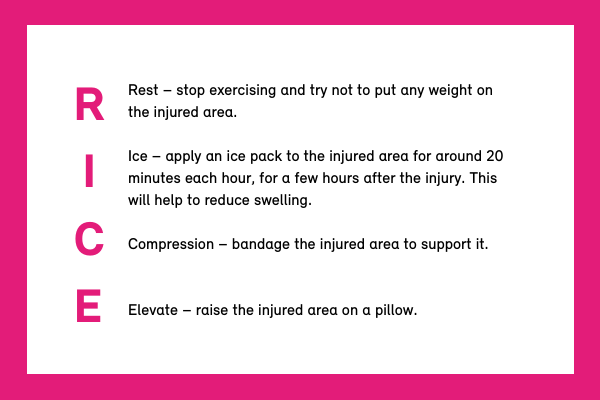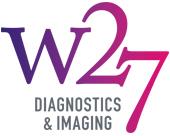The start of a new year is often a time for us to think about making changes in our life and improving health is number one on many people’s priority list. If you are suffering from recent or long-term sporting injuries, why not make this the year you take action to investigate your symptoms and the possible treatment options?
Why sports injuries occur
Playing sport is a frequent cause of injury, particularly in high impact sports that involve running, jumping and tackling. There can be a number of different reasons why injuries occur but common ones include: not warming up or cooling down properly; lack of training and poor technique; not wearing the right footwear or protective gear; and being out of condition or trying to do too much without building up your fitness properly.
Common sports injuries
Certain types of injury occur most frequently in sportsmen and women including:
- Sprains, which is when a ligament becomes stretched or torn.
- Strains, which is when a muscle is twisted, pulled or torn.
- Knee injuries, which can range from painful conditions like runner’s knee and iliotibial band syndrome through to more serious damage like a torn anterior cruciate ligament.
- Shin splints, which is pain along the shin bone that can affect the foot and ankle or outside part of the lower leg.
- Achilles tendon injuries, including stretches, tears and irritation to the tendon that connects the calf muscle to the back of the heel.
- Dislocations, which may result from falling or high speed collisions.
- Fractures, which are often associated with repetitive impacts such as running or jumping.
Why it’s crucial to get a diagnosis
The first step if you sustain a sports injury is always an accurate diagnosis as, until you know exactly what is causing your symptoms you won’t be able to identify what treatment is likely to be most effective. A radiologist offers a range of diagnostic imaging techniques that help to pinpoint the type and severity of musculoskeletal injuries. These include:
- X-ray, which uses radiation to produce images of body structures and is routinely used to diagnose fractures and dislocations, as well as infection and inflammation.
- Ultrasound, which uses high frequency sound waves to produce pictures of the insides of organs, bones, joints, muscles, tendons and ligaments. Ultrasound imaging is commonly used to diagnose muscle tears, torn or inflamed tendons, ligament sprains and tears, trapped nerves and inflammation or hernias.
- CT scan, which uses X-rays to create lots of thin slice images of the body that are reconstructed into a detailed 3D image. This type of scan is used to diagnose problems with bones, joints and internal organs. CT scans can also be used in some types of treatment such as injections into a nerve root to relieve pain.
- MRI scan, which uses a magnetic field and radio frequency energy to produce detailed images of the inside of the body. They are used to diagnose problems affecting the bones, joints, muscles, ligaments, tendons and spine as well as identifying tumours and monitoring the impact of treatment.
In addition, specialist musculoskeletal radiologists like W27 also offer certain types of specialist diagnostic imaging such as arthrogram injections which are used to pinpoint the exact source of any pain. These involve injecting contrast dye into painful joints using ultrasound or X-ray to ensure accuracy. An MRI or CT scan is then used to identify the cause of any pain. The same technique can also be used to treat joint problems.
What’s the difference between acute and chronic injuries?
An acute injury is one that occurs suddenly and normally results in severe pain and swelling, for example, a fracture or sprain. By contrast, a chronic injury is one that develops over time normally from overuse. Symptoms of chronic injury typically include a dull ache which increases in severity when performing certain movements or activities.
What should I do if I suffer an injury?
Whether the injury is acute or chronic, it’s important to stop, as continuing to exercise on a damaged limb will exacerbate the problem and may cause long term damage.
Less severe injuries will normally recover if you rest the affected area and use a cold compress and anti-inflammatories to reduce the swelling (the RICE method refers to rest, ice, compression, elevation, which are all effective ways to treat mild musculoskeletal injuries). However, for more severe injuries you will need to seek medical help. Radiologists provide diagnostic imaging to discover the type and extent of the injury.
Orthopaedic consultants provide treatment for musculoskeletal problems and physiotherapists can devise a programme of exercise to support rehabilitation and strengthen muscles and joints to prevent further injury.

If you have suffered a sporting injury, whether due to an accident or as a result of long-term damage, contact W27 for specialist advice and diagnosis.
SPORTS INJURY TREATMENT | MANCHESTER, WIGAN, CHESHIRE + MORE
W27 provides fast, accurate diagnosis and treatment of musculoskeletal symptoms and conditions using the latest state-of-the-art imaging facilities.
For your appointment there is a choice of locations:
The John Charnley Wing, Wrightington Hospital – Hall Lane, Appley Bridge, Wigan, WN6 9EP
HCA The Wilmslow Hospital – 52 Alderley Road, Wilmslow, Cheshire, SK9 1NY
Euxton Hall Hospital – Wigan Road, Euxton, Chorley, PR7 6DY
The Spire Manchester – 170 Barlow Moor Road, Didsbury, Manchester, M20 2AF
The OrthTeam Centre Ohm Building – 168 Barlow Moor Road, Manchester, M20 2AF
MedSerena Upright MRI Centre – 26-28 The Boulevard, Manchester, M20 2EU
Information about our Fees can be found here.
If you have any questions or would like to discuss your options with a specialist, please contact the team to book an initial consultation.










